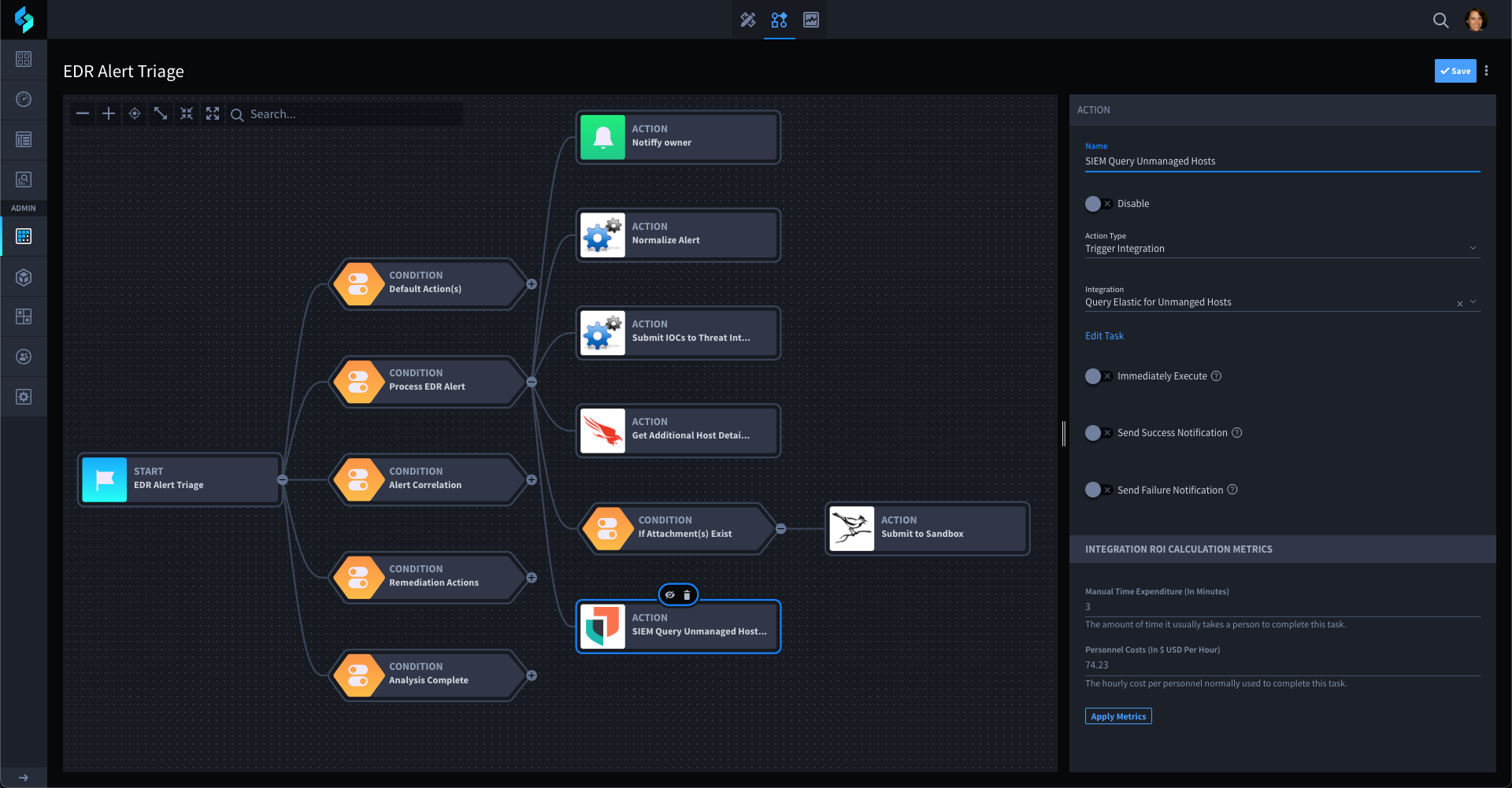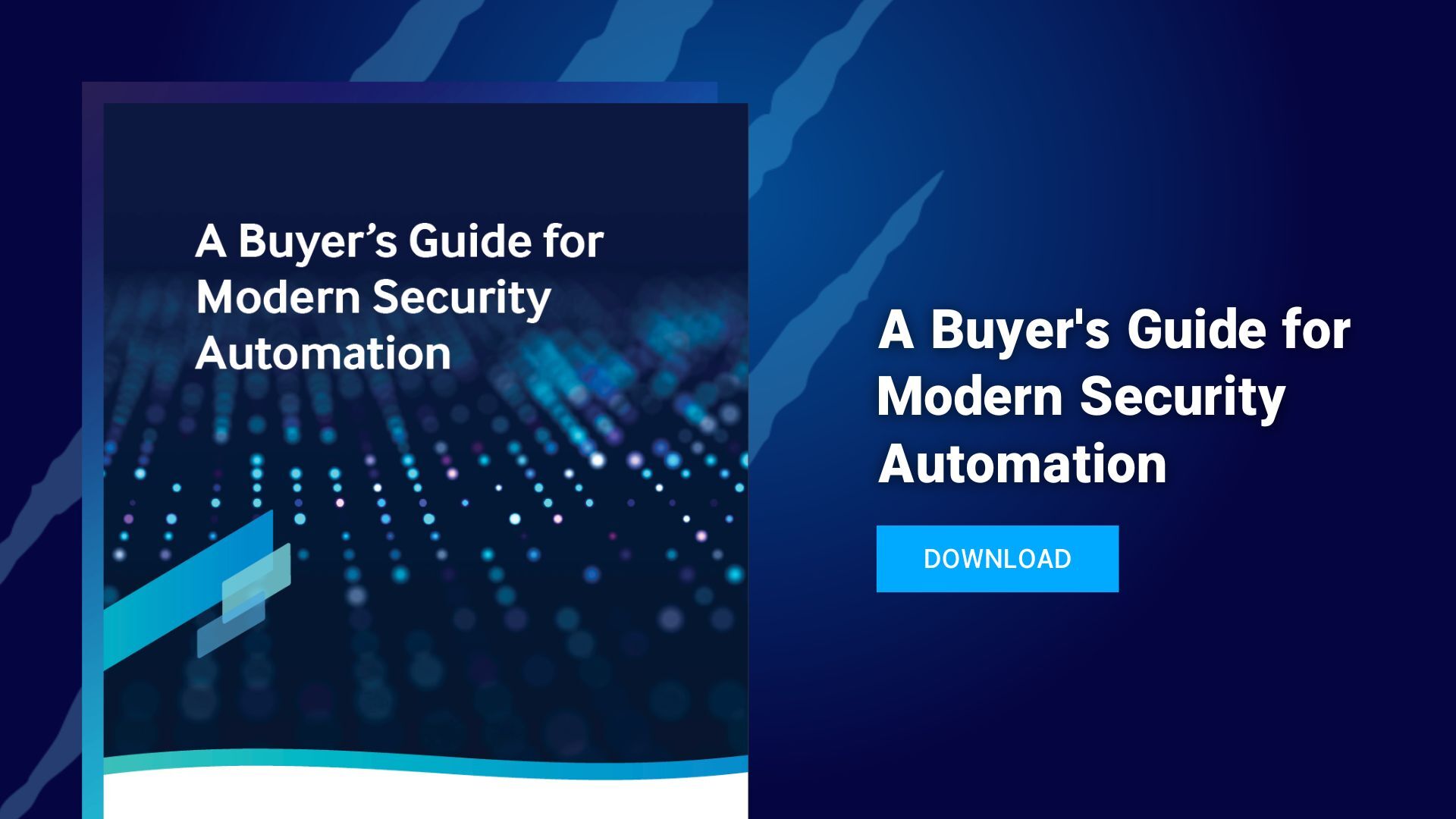With an increasingly complex threat landscape and an extreme cybersecurity skills shortage, many organizations are looking for ways to improve and simplify security operations. Even though staffing and cybersecurity budgets are rising, they aren’t keeping pace with the increase in threats. So, organizations are struggling to find solutions that provide adequate security at the scale they need, and at a reasonable price. Security automation is a solution that leading security operations center (SOC) teams consider.
Over the last few years, the definition of security automation has changed. In the past, a common definition would have simply been: the automation of cybersecurity controls. But this definition no longer represents the current scope of security automation. These two words have now evolved into a phrase that includes certain connotations of specific features and abilities.
There is a better way to define security automation now, keep reading to learn more.
What is Security Automation?
Security automation can be defined as; “The automation of systems to detect and prevent cyber threats while contributing to the overall threat intelligence of an organization to plan and defend against future attacks. It’s designed to automatically execute best practices defined by SecOps teams – all at rapid machine speeds to speed resolution, streamline communications, and mitigate risk.”
Watch this short video interview between Swimlane co-founder and CISO, Cody Cornell, and TAG Cyber CEO, Dr. Ed Amoroso to learn more about the difference between security automation and orchestration.
What Does Automation in a Security Platform Help Provide?
Security automation platforms adapt to an organization’s unique security requirements, automating tasks that take up valuable time and attention. With the help of automation incident response processes can be accelerated, allowing SOC teams to respond to more incidents in less time without adding overhead.
Benefits of Security Automation for Analysts
Why is security automation important? Automating security processes has advantages for both SOC analysts and security leaders, including:
Save Time on Repetitive, Mundane Tasks
Automate the time-sucking security tasks that take up most of the day. SOC teams who use automation improve work-life balance by getting more done during your 9-5 and reducing the number of alerts you receive.
Fight Alert Fatigue & Burnout
Analysts who use security automation save time that was previously required to filter, sort, and visualize data. This frees analysts from manual and error-prone tasks so they can spend more time on strategic initiatives.
Faster Threat Detection
SOC analysts can proactively respond to almost 80% more security telemetry data with security automation. They were able to stop attacks earlier in the attack lifecycle and prevent them from becoming breaches – improving your work performance without adding more work.
A System of Record for Security
With dynamic case management, dashboards, and reporting, security automation makes it easier to communicate with fellow SOC analysts on alerts. Plus, it’s easier to close more security alerts in less time with enriched data and rapid response.
Benefits of Security Automation for Security Leaders
Speed up Metrics like MTTD and MTTR
Organizations that use security automation can reduce manual interventions by one-third in the first six months of deployment. Improve efficiency and effectiveness of day-to-day security operations to reduce MTTD by 50%.
Improve ROI
Security automation platforms drastically reduce work hours and labor costs. Fortune 100 organizations see savings of $160,000 per month in labor costs and 3,700 hours of work each week. Automation dashboards and reporting make it easy to measure these statistics so that security leaders can evaluate the efficacy of their investments.
Future-Proof Security
Security is always evolving, as are the tools organizations use. Certain security automation platforms offer the flexibility and power that can adapt as security teams need change. For example, security automation acts as a force multiplier to empower understaffed and overburdened SOC teams. Likewise, automation can be used to integrate cloud services and security tools to reduce context switching, complexity, and silos across the security organization.
Yes, especially if your SecOps team is already equipped with the basics like SIEM, endpoint security systems, and security logs.
With security automation, your organization can improve security with functions like:
- Detect threats across your environments
- Automate repetitive, time-consuming tasks
- Integrate across your technology stack
- Easily build automated playbooks & workflows
- Case management & reporting

The Types of Security Automation
AI-Enabled Security Automation
This modern approach to SecOps automation applies generative artificial intelligence (AI) and low-code automation technologies to automation to maximize the speed, scale, and effectiveness of the platform. AI-enabled security automation platforms, like Swimlane Turbine, are full-featured and include case management, dashboards, reporting, low-code playbooks, collaboration tools, integration fabric, and AI into a single platform.
SIEM
Security information and event management (SIEM) solutions examine log data for patterns that could indicate a cyberattack, then offer micro automation capabilities to correlate event information between devices to identify potentially anomalous activity, and finally, issue an alert accordingly. SIEM automation falls short of end-to-end incident response. It is not built to scale to the entire SecOps automation use cases.
SOAR
Security orchestration automation and response (SOAR platforms) are often dependent on SIEM infrastructure for data ingestion. After the data is aggregated, correlated, and enriched it is used in SOAR playbooks, case management, and incident reporting. These full-code, python-based, tools require significant developer resources to implement, build, and maintain integrations which restrict their ability to scale to use cases beyond the SOC.
XDR
Extended detection and response (XDR) platforms are the next generation of endpoint detection and response (EDR) tools. They aim to consolidate threat detection and incident response (TDIR) into a single management console. Because XDR products are typically rooted in EDR, they tend to have strong detection capabilities but are merely checking the box on the backend automation requirements for effective TDIR.
No-Code Automation Tools
No-code automation tools support codeless access to the basics of automation logic and actions. These offerings can automate basic workflows but tend to fall short of complete end-to-end use case automation. Because of this limitation and immaturity or complete lack of case management, dashboard, and reporting, no-code automation offerings are tools, not platforms. Learn more about low-code vs. no-code security automation.
Common Security Automation Use Cases
Security automation was born out of SOAR, which offers forever-popular use cases like phishing and alert triage that are managed inside the security operations center (SOC). However, security automation platforms extend the value of automation beyond SOAR and can automate across the entire security organization: from SecOps to fraud, OT environments, cloud, compliance, audit, and more. Some security automation platforms take these extended use cases a step further and leverage the power of AI for maximum speed, simplicity and scale.
Inside the SOC – typical use cases within security include:
Beyond the SOC – some security automation platforms have use cases that expand beyond normal SOC processes. These include:
- Insider-Threat
- Employee onboarding/offboarding
- Fraud Prevention
- Anti-Cheat
- Physical Security
- Third-Party Risk Management
Security automation platforms, like Swimlane Turbine, integrate with your existing security infrastructure to provide you with a way to automate incident response, prioritize alerts, and have a clear understanding of the state of security within your organization.
Do SecOps Teams Really Need Security Automation?
Without a doubt! Security Automation is an imperative for any organization. By automating security processes organizations proactively strengthen their security posture, detect and respond to threats with unparalleled speed, and stay ahead of the dynamic challenges posed by the ever-evolving cyber landscape. Ai-enabled security automation is not just a nice to have, it’s a necessity.
Learn more about Swimlane Turbine and see a demo of how it could help your team at swimlane.com/demo

A Buyer’s Guide for Modern Security Automation
Cut through the complexity and frustration of SOAR and security automation solutions. This guide analyzes the wide range of security automation platforms available today, so you can find the best solution for your team.


